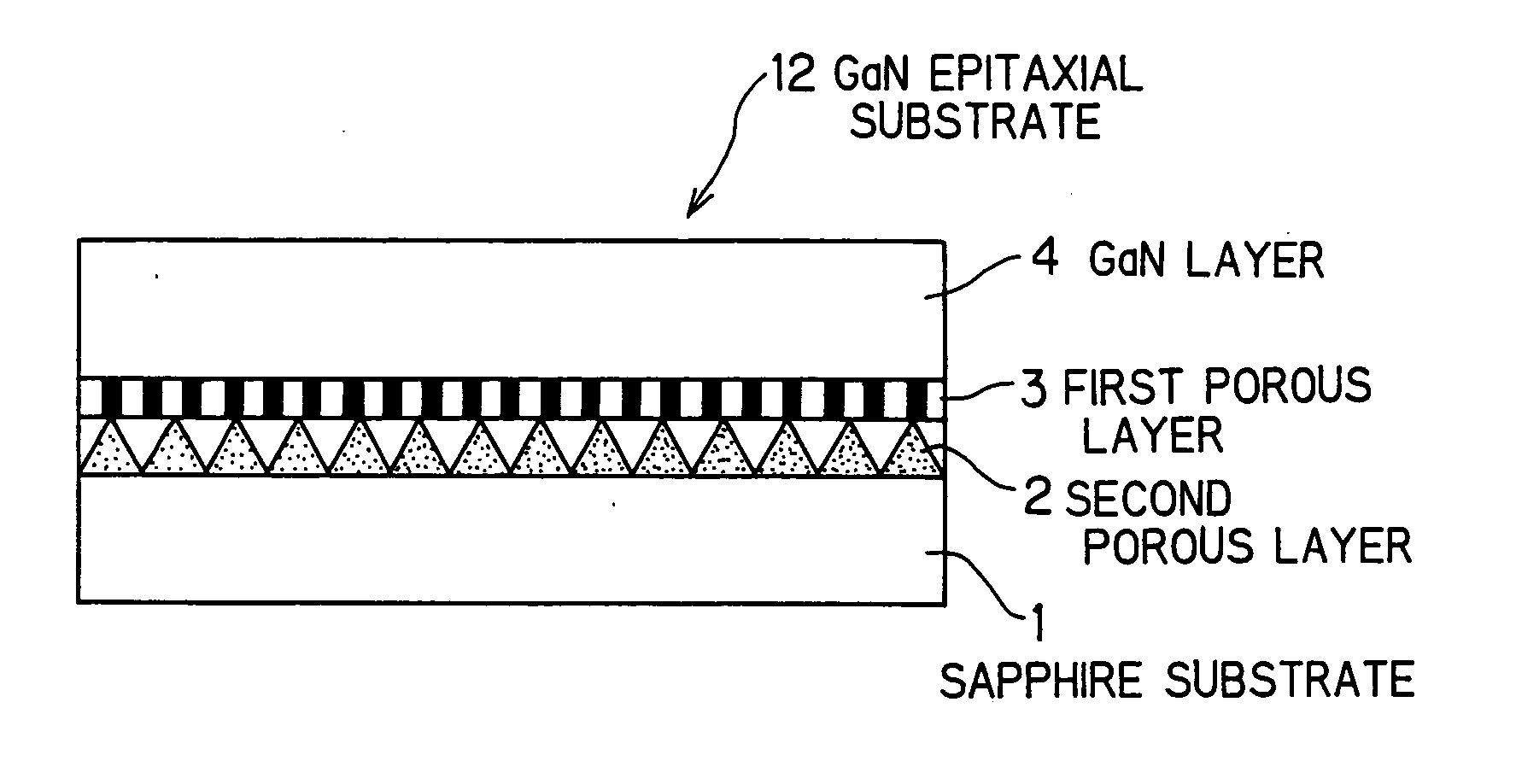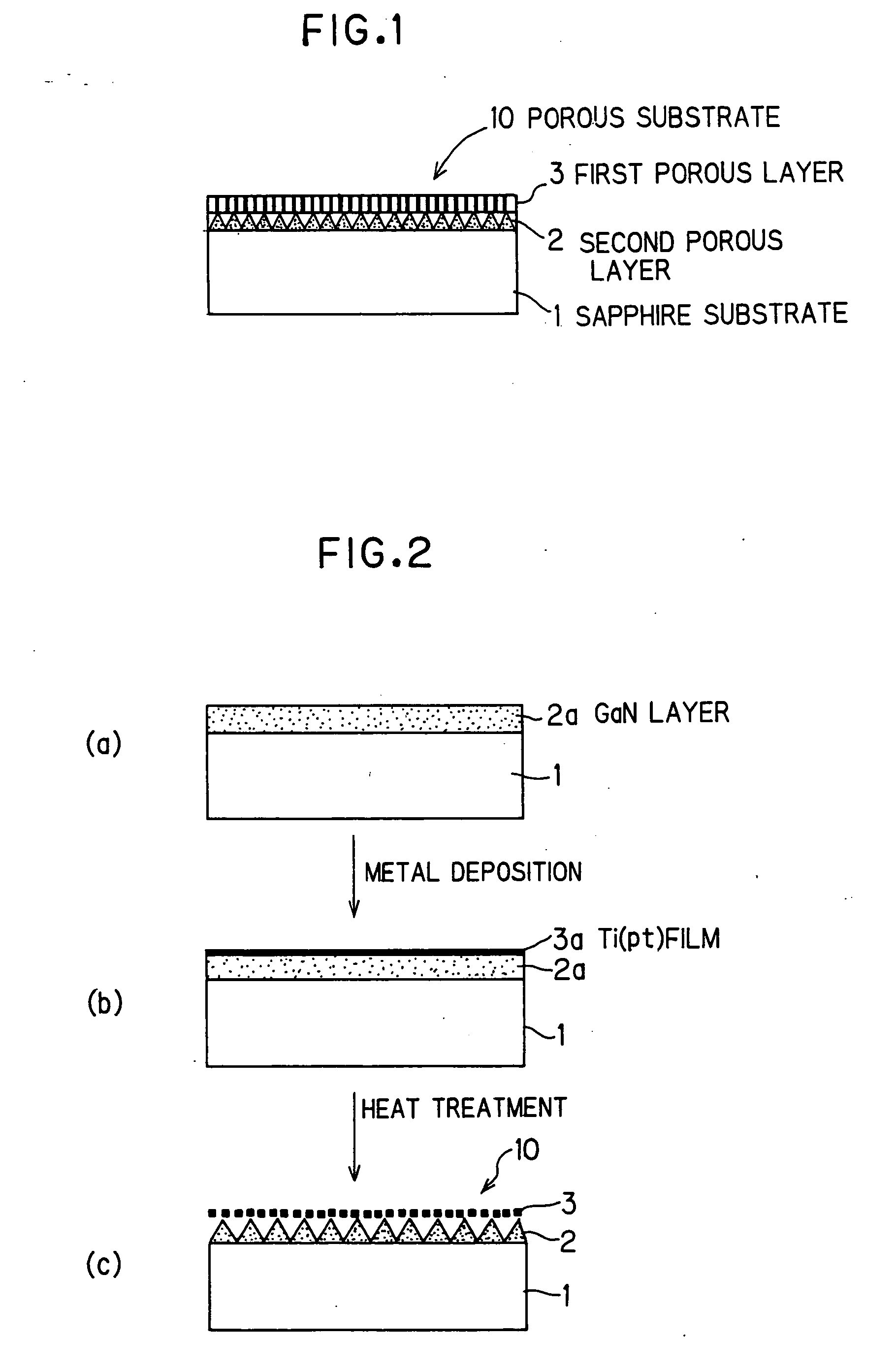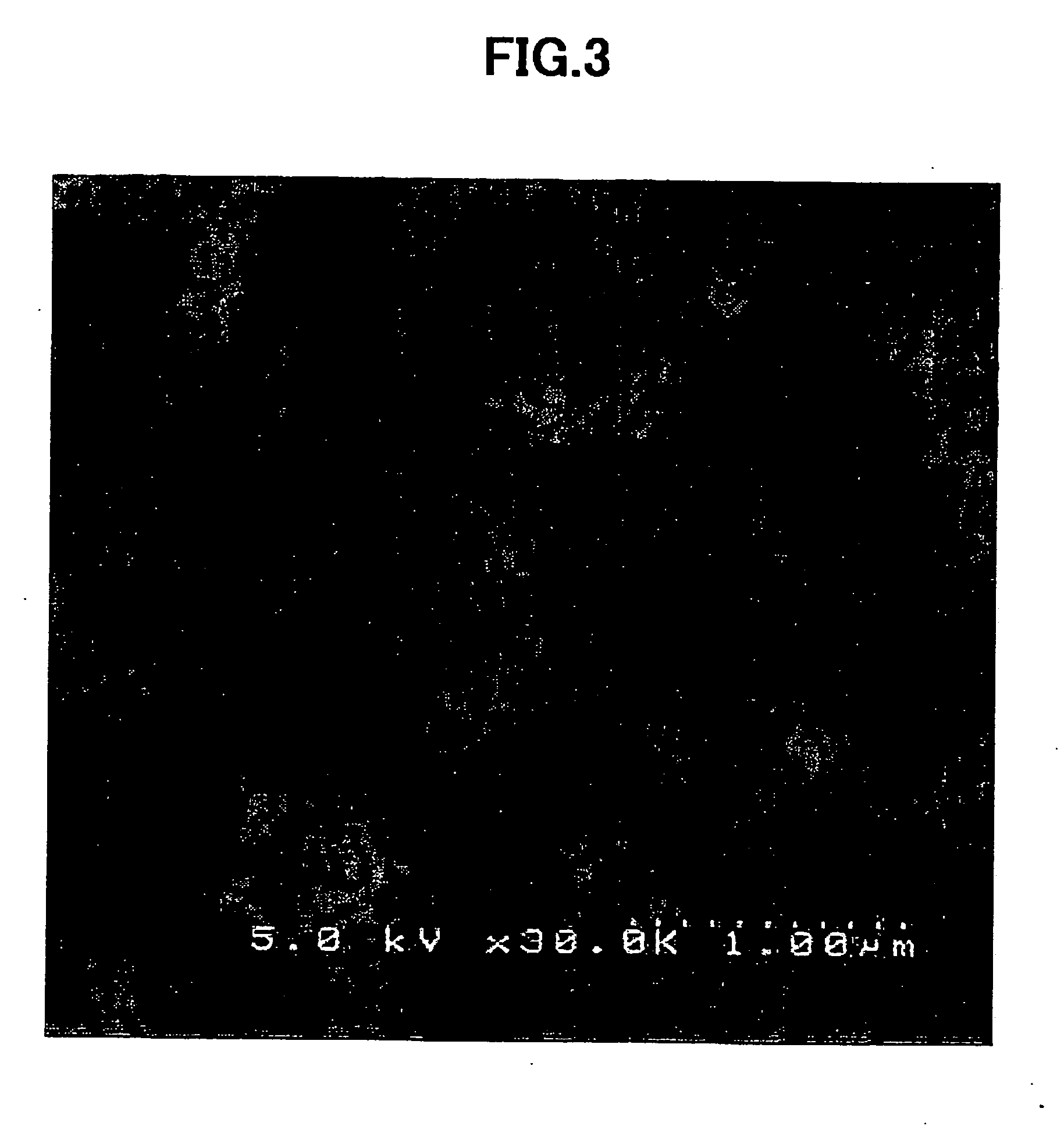Porous substrate and its manufacturing method, and gan semiconductor multilayer substrate and its manufacturing method
a technology of porous substrates and manufacturing methods, applied in the direction of polycrystalline material growth, chemically reactive gases, crystal growth processes, etc., can solve the problems of defect becoming an obstacle, the lattice mismatch between the substrate and the crystal cannot be eliminated, and the single crystal film cannot be grown by directly growing gan on the sapphire substra
- Summary
- Abstract
- Description
- Claims
- Application Information
AI Technical Summary
Benefits of technology
Problems solved by technology
Method used
Image
Examples
embodiment 1
[0052]FIG. 1 illustrates a porous substrate 10 where a second porous layer 2 comprising GaN is formed on a single-crystal sapphire substrate 1, and a first porous layer 3 comprising a metal nitride such as TiN or the like is formed on the second porous layer 2.
[0053] The process for fabricating the porous substrate 10 illustrated in FIG. 1 will be explained.
[0054] As shown in FIG. 2 (a), a GaN layer 2a was grown 500 nm on a single-crystal sapphire C-face substrate 1 with a diameter of 2 inches, with MOVPE, using TMG and NH3.
[0055] Subsequently, a metal Ti film 3a was deposited 20 nm on the GaN layer 2a using a vacuum deposition apparatus (FIG. 2 (b)) This was inserted into an electric furnace, and was heated in a H2 gas stream mixed with NH3 20%, at 1040° C. for 20 min.
[0056] As a result, as shown in FIG. 2 (c), part of the GaN layer 2a was etched to cause the occurrence of high-density pores so that a second porous layer 2 was formed, while at the same time the Ti film 3a was n...
embodiment 2
[0060]FIG. 5 shows an example where a GaN crystal is grown on a porous substrate 10 shown in embodiment 1, with MOVPE.
[0061] The porous substrate 10 fabricated with the method of embodiment 1 was inserted into an MOCVD furnace, and was heated in an ammonia stream mixed with H2 20%, at 1050° C., for 30 min. Subsequently, in the same furnace, a GaN film 4 was grown 2 μm on the TiN layer (the first porous layer 3) at 1050° C., using TMG and NH3. Nomarski microscope and SEM observations verified that the surface of a GaN epitaxial substrate 12 obtained was very flat and in a good surface state with less microscopic irregularity in its surface, compared to an existing GaN epitaxial substrate grown on a sapphire substrate via a low-temperature growth buffer layer.
[0062] AFM (atomic force microscope) observation verified that the GaN single-crystal substrate 12 obtained had high crystalline quality, by showing that the measured density of pits (corresponding to dislocations) observed in ...
embodiment 3
[0064] An example of using Pt as first porous layer 3 material and GaN as second porous layer 2 material will be explained, referring to FIG. 2 as in Embodiment 1.
[0065] A substrate 8 was prepared having GaN layer 2a grown 0.5 μm a single-crystal sapphire C-face substrate 1 with a diameter of 2 inches, with MOVPE, using TMG and NH3. A metal Pt film 3a was deposited 20 nm on the GaN layer 2a, and this was inserted into an electric furnace, and was heated in an atmosphere, at 850° C., for 20 min. As a result, a second porous layer 2 with high-density pores analogous to FIG. 4 was formed in the GaN layer 2a, while a first porous layer 3 with high-density holes of submicrons was formed in the Pt film 3a.
PUM
| Property | Measurement | Unit |
|---|---|---|
| Fraction | aaaaa | aaaaa |
| Thickness | aaaaa | aaaaa |
| Diameter | aaaaa | aaaaa |
Abstract
Description
Claims
Application Information
 Login to View More
Login to View More - R&D
- Intellectual Property
- Life Sciences
- Materials
- Tech Scout
- Unparalleled Data Quality
- Higher Quality Content
- 60% Fewer Hallucinations
Browse by: Latest US Patents, China's latest patents, Technical Efficacy Thesaurus, Application Domain, Technology Topic, Popular Technical Reports.
© 2025 PatSnap. All rights reserved.Legal|Privacy policy|Modern Slavery Act Transparency Statement|Sitemap|About US| Contact US: help@patsnap.com



